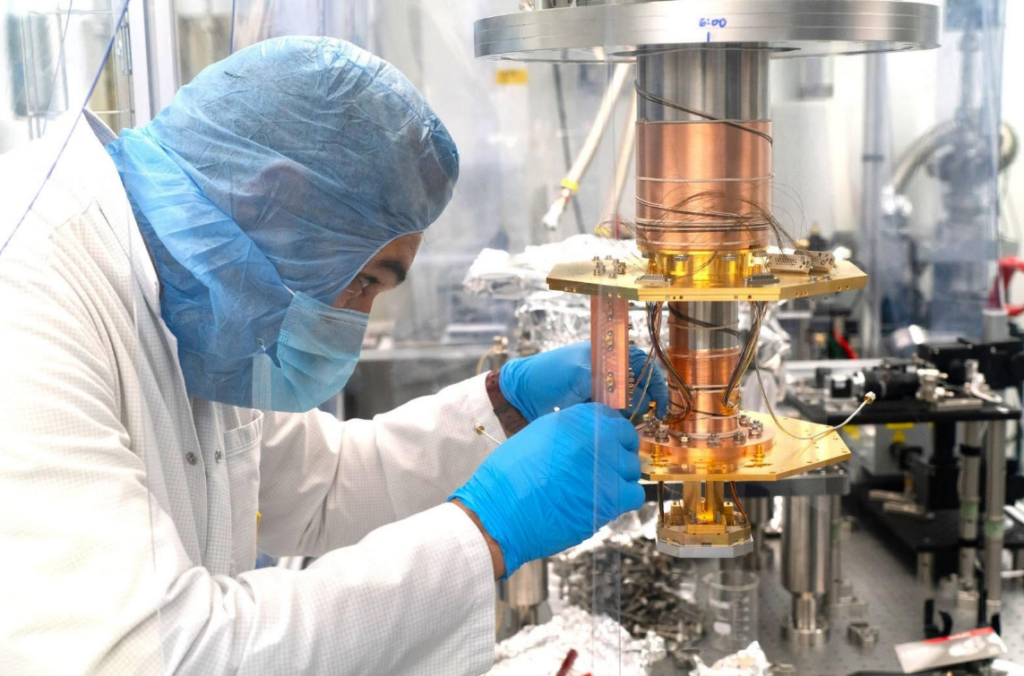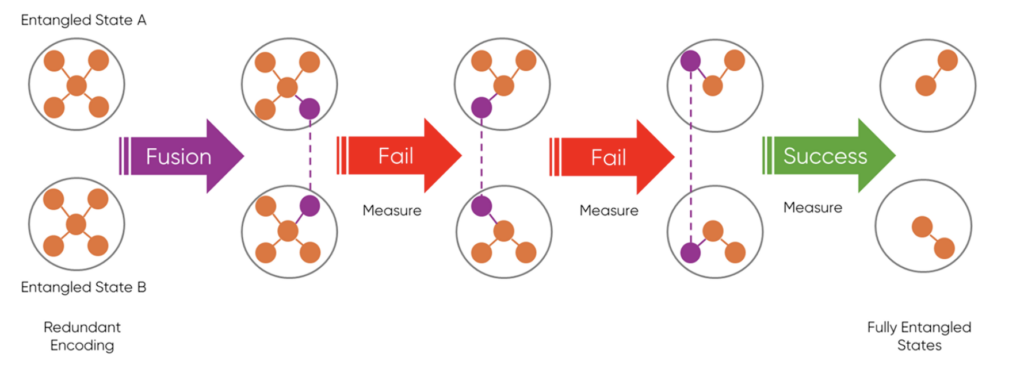Insider Brief
- Researchers at KIT’s Physikalisches Institut have developed a method to precisely control diamond tin-vacancy qubits, significantly improving their stability and coherence times up to ten milliseconds.
- These advances, using microwave control and superconducting waveguides, are steps toward scalable quantum computing and secure quantum communication systems.
- The study demonstrates that diamond defects can be controlled efficiently at extremely low temperatures.
PRESS RELEASE — Quantum computers and quantum communication are pioneering technologies for data processing and transmission that is much faster and more secure than with conventional computers. Qubits are the basic units of information in quantum computers; they are the quantum mechanical counterparts of the bits in ordinary data processing.
Where, for example, laser pulses in a glass fiber transport information from A to B in classical digital communication, quantum mechanics uses individual photons. In principle, this makes it impossible to intercept the transmitted data. Qubits that are optically addressable (can be controlled or read out with light) are suitable for storing the photons’ information and processing it in quantum computers. The qubits can store and process quantum states, and absorb and emit them in the form of photons.
Qubit Stability Is Key

A major challenge in qubit development is extending the coherence time, i.e. the time in which qubits can store information in a stable manner. Being able to control qubits and keep them stable enough to exploit their characteristics in practical applications will be crucial to the feasibility of developing efficient and scalable quantum computers.
At KIT’s Physikalisches Institut, doctoral researchers Ioannis Karapatzakis and Jeremias Resch have investigated how to precisely control a special defect in diamonds known as a tin-vacancy (SnV) center. Their work was part of two projects funded by Germany’s Federal Ministry of Education and Research: QuantumRepeater.Link (QR.X) for secure fiber-based quantum communication and SPINNING, which aims to develop a diamond spin-photon-based quantum computer.
“A defect in the lattice structure of a diamond’s carbon atoms occurs when atoms are missing or are replaced by other atoms such as tin,” said Karapatzakis. Such defects can be used as qubits for quantum communication because they have special optical and magnetic properties that enable states such as their electron spin to be manipulated using light or microwaves. The defects can then be used as stable qubits that can store and process information and couple it with photons.
Considerable Improvement in Coherence Times
Diamond qubits have the advantage of existing in the solid phase, making them easier to work with than other quantum materials, e.g. atoms in vacuum. Karapatzakis and Resch were able to precisely and observably control the electron spins of tin-vacancy center qubits using microwaves. “We were able to increase the coherence times of the diamond SnV centers to as long as ten milliseconds – a major improvement,” says Resch. They did so with dynamical decoupling, which largely suppresses interference. A further special aspect of the researchers’ results is their success in demonstrating for the first time that this type of diamond defect can be very efficiently controlled with superconducting waveguides, which efficiently direct microwave radiation to the defects without generating heat. “That’s very important because these defects are generally investigated at very low temperatures near absolute zero. Higher temperatures would make the qubits useless,” says Karapatzakis.
“To establish communication between two users or (later) between two quantum computers, we need to transfer the qubit quantum states to photons,” notes Resch. “With optical readout of qubits and by reaching stable spectral properties, we’ve taken an important step in that direction. So our results on controlling tin-vacancy centers in diamonds offer potential for an important breakthrough in the future development of secure and efficient quantum communication.”
The team published their findings in Physical Review.


















